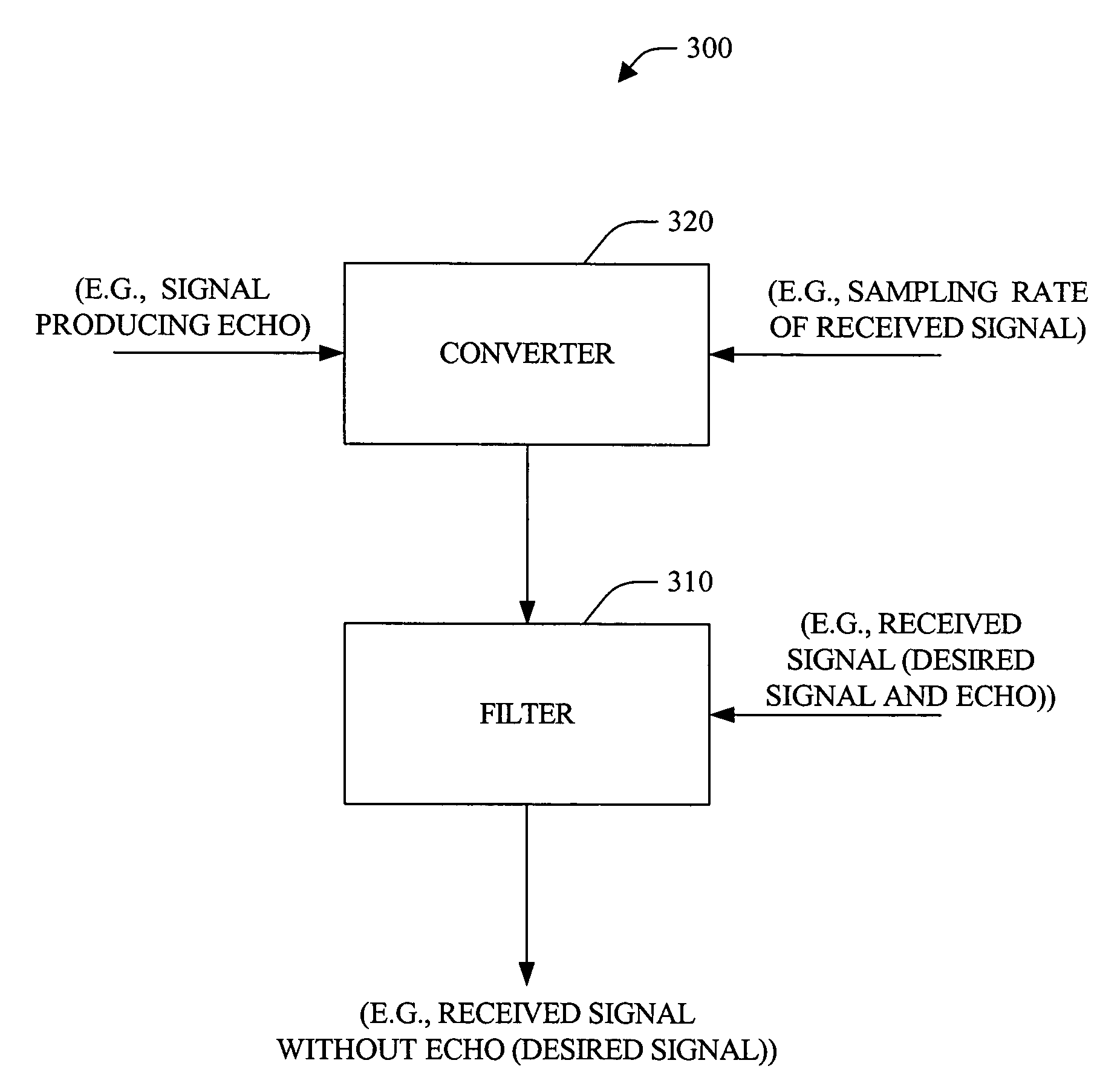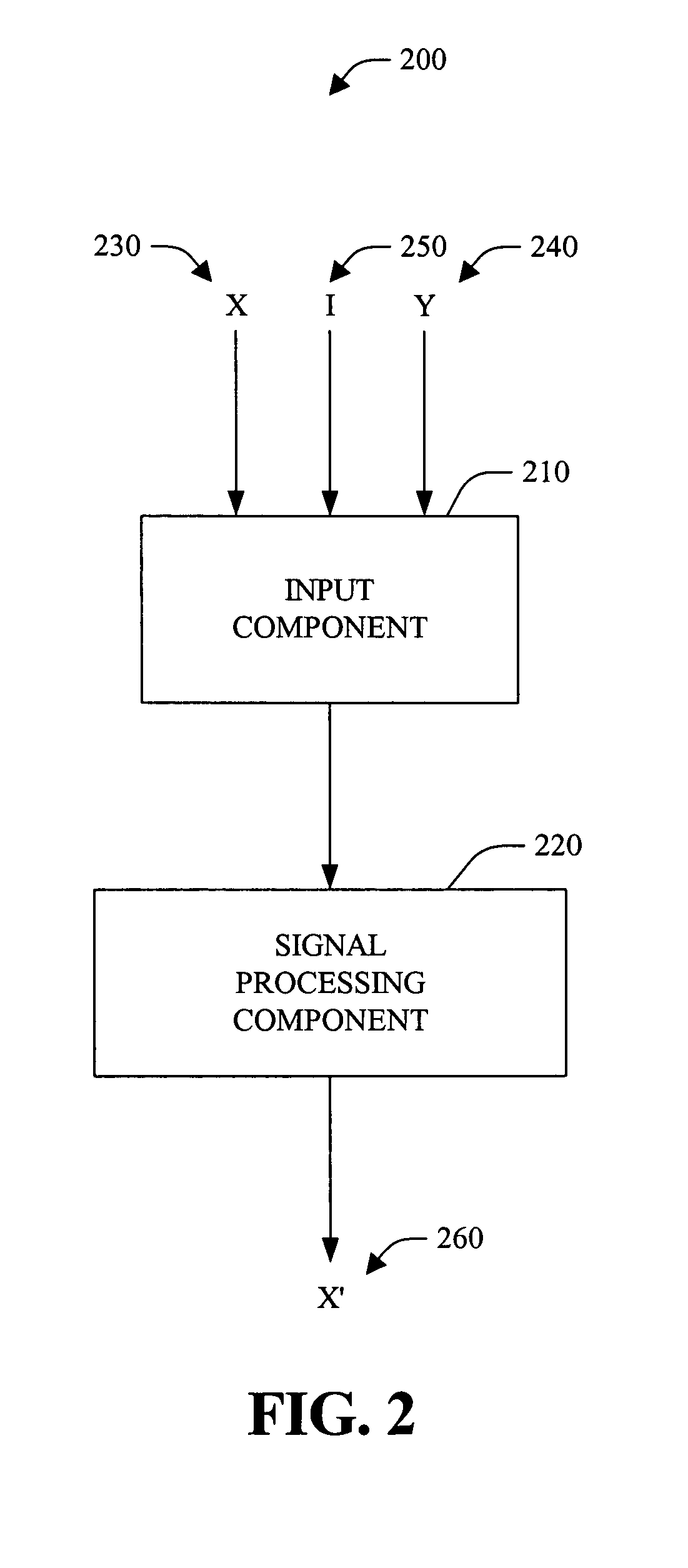Systems and methods for echo cancellation with arbitrary playback sampling rates
a technology of echo cancellation and sampling rate, applied in the field of signal processing, can solve the problems of additional time delay, limited sound quality that can be played back, and susceptible to aliasing artifacts, and achieve the effect of facilitating signal transformation
- Summary
- Abstract
- Description
- Claims
- Application Information
AI Technical Summary
Benefits of technology
Problems solved by technology
Method used
Image
Examples
Embodiment Construction
[0030]The present invention provides systems and methods for adaptive subband acoustic echo cancellation (AEC) with arbitrary playback sampling rates. In general, the systems and methods transform a playback signal to the frequency domain and convert its sampling rate to a sampling rate associated with a frequency domain transformed received signal. This conversion can be achieved via an exact transform or by interpolating the playback signal in the frequency domain to match the transform size of the received signal for the appropriate number of frequency bins. Suitable transforms include, for example, the fast Fourier Transform (FFT), the windowed FFT, and the Modulated Complex Lapped Transform (MCLT). The foregoing can be performed internally to the AEC architecture, which provides an improvement over conventional techniques that employ computationally expensive sampling rate converters.
[0031]The present invention is described with reference to the drawings, wherein like reference...
PUM
 Login to View More
Login to View More Abstract
Description
Claims
Application Information
 Login to View More
Login to View More - R&D
- Intellectual Property
- Life Sciences
- Materials
- Tech Scout
- Unparalleled Data Quality
- Higher Quality Content
- 60% Fewer Hallucinations
Browse by: Latest US Patents, China's latest patents, Technical Efficacy Thesaurus, Application Domain, Technology Topic, Popular Technical Reports.
© 2025 PatSnap. All rights reserved.Legal|Privacy policy|Modern Slavery Act Transparency Statement|Sitemap|About US| Contact US: help@patsnap.com



